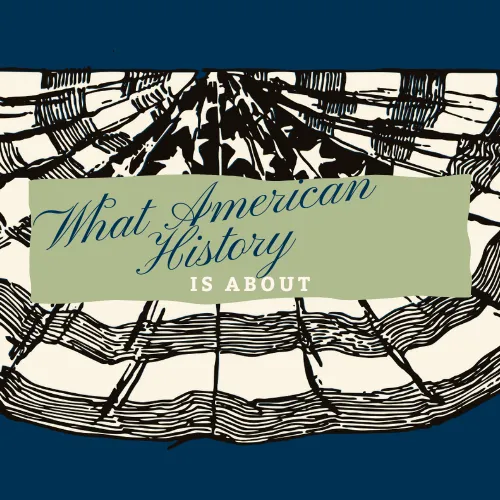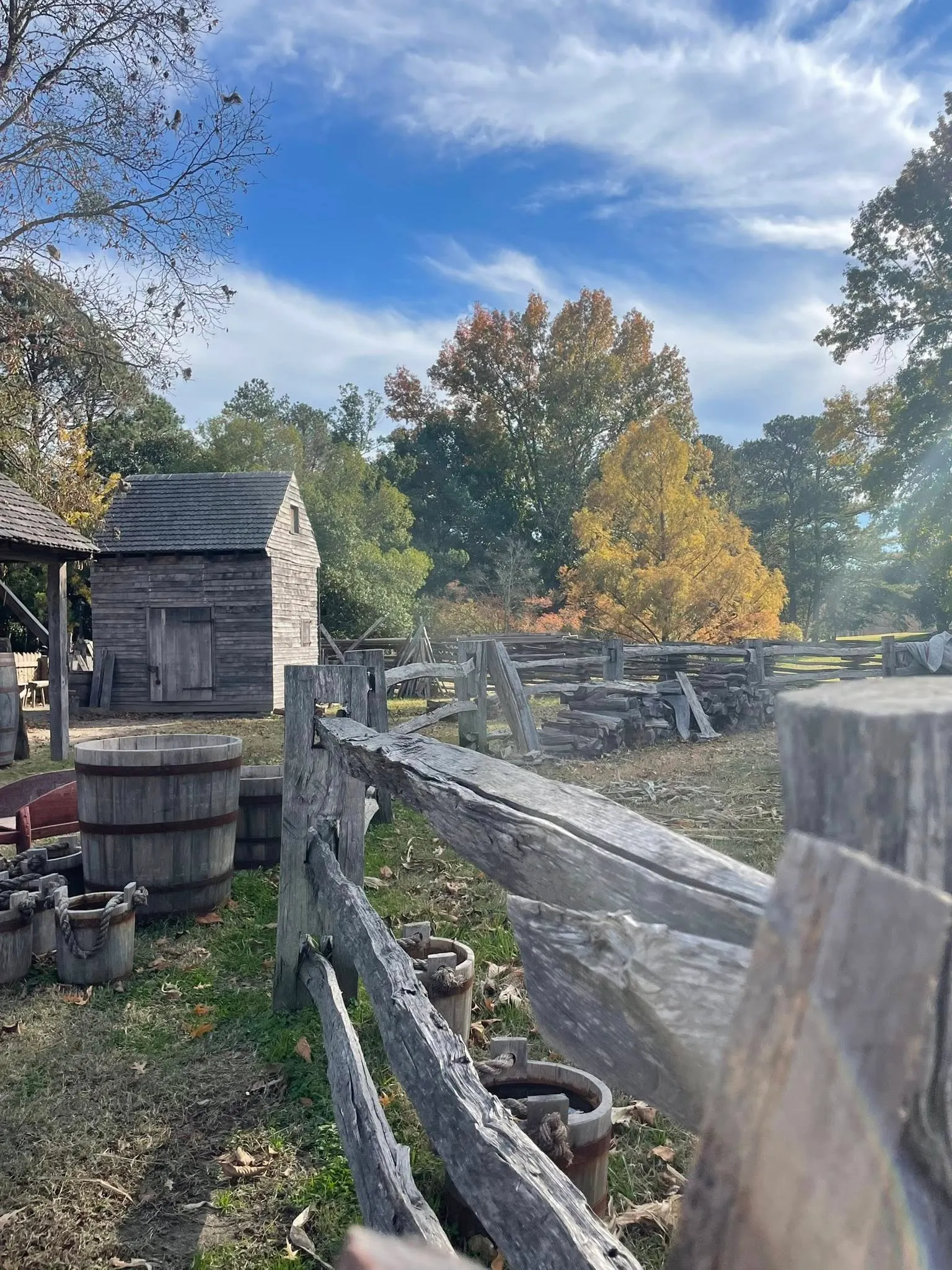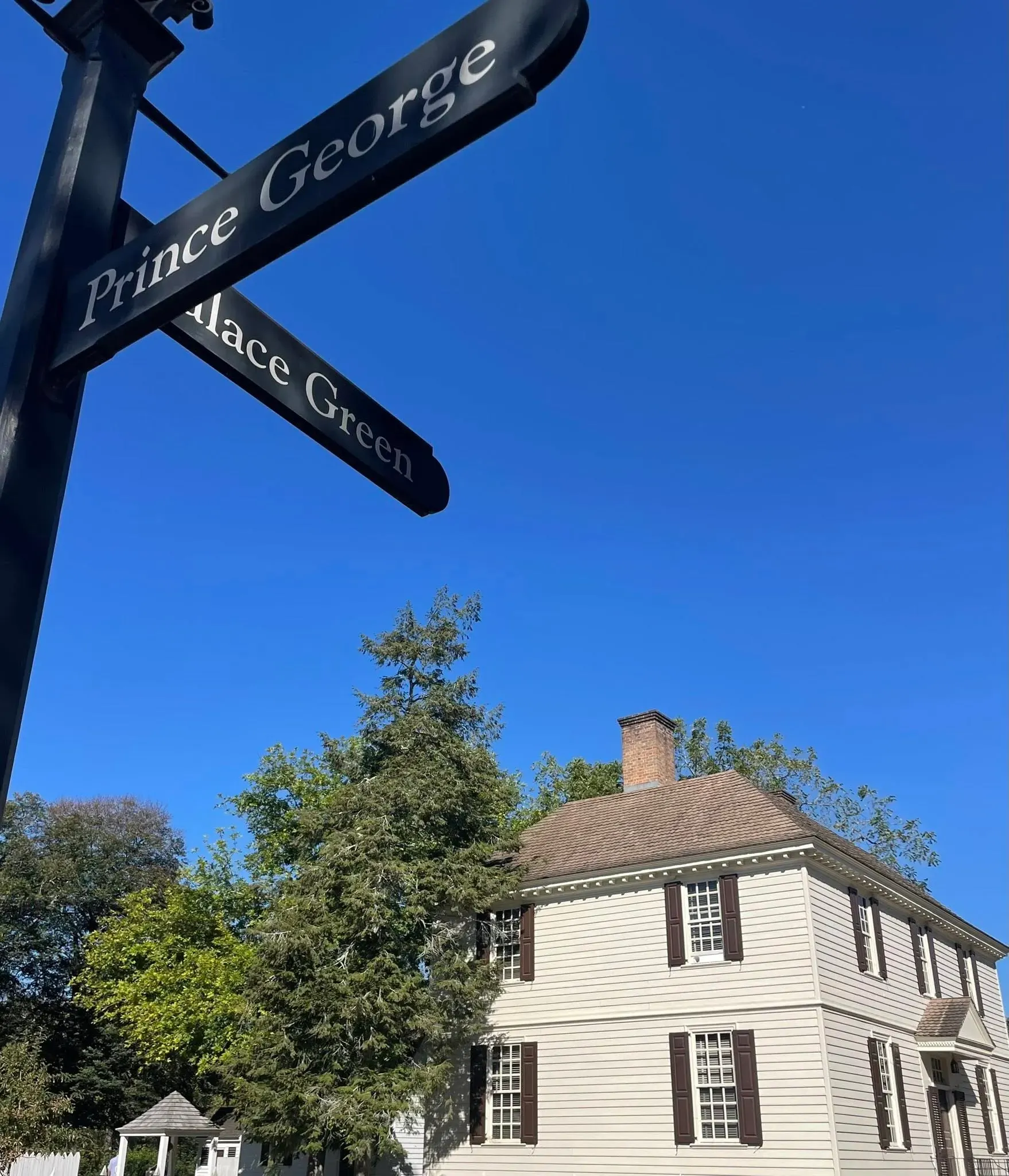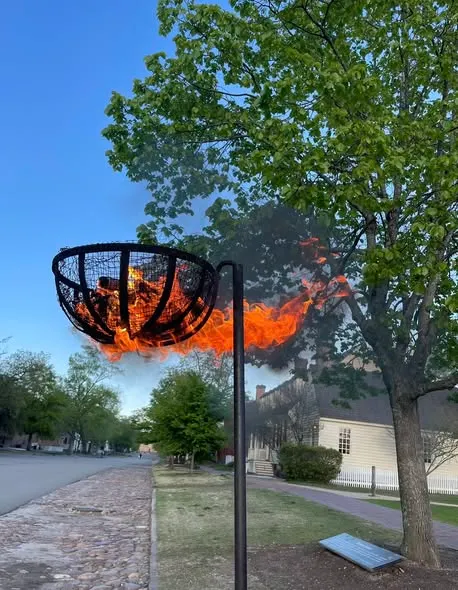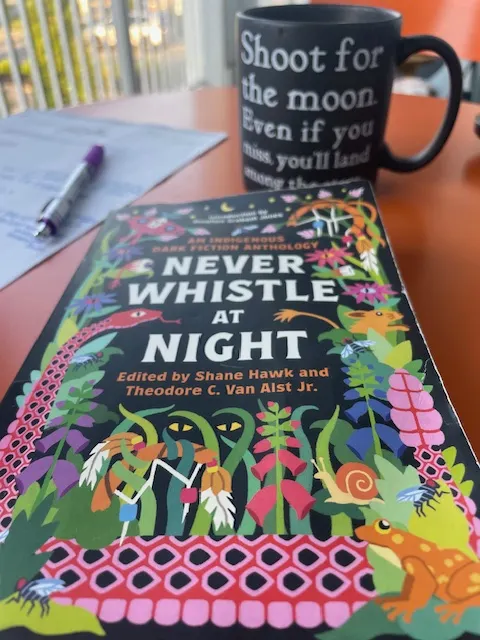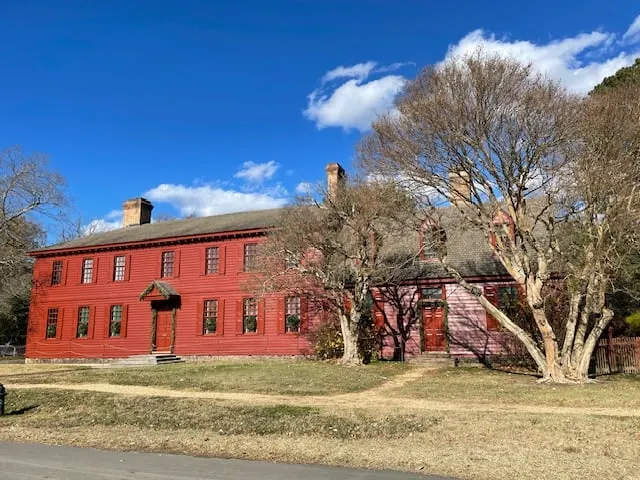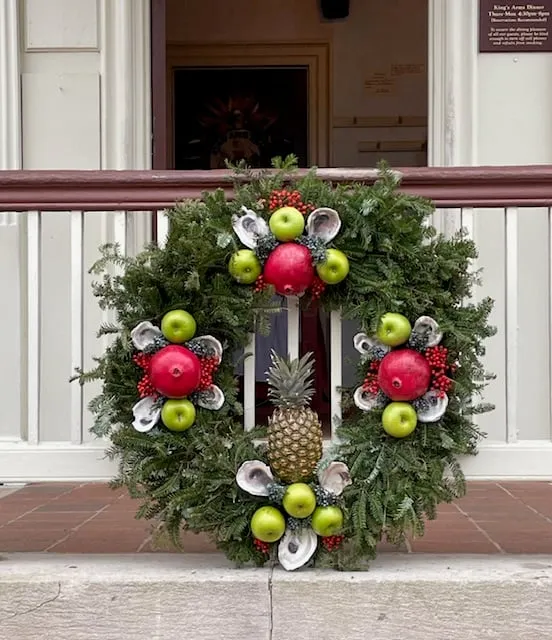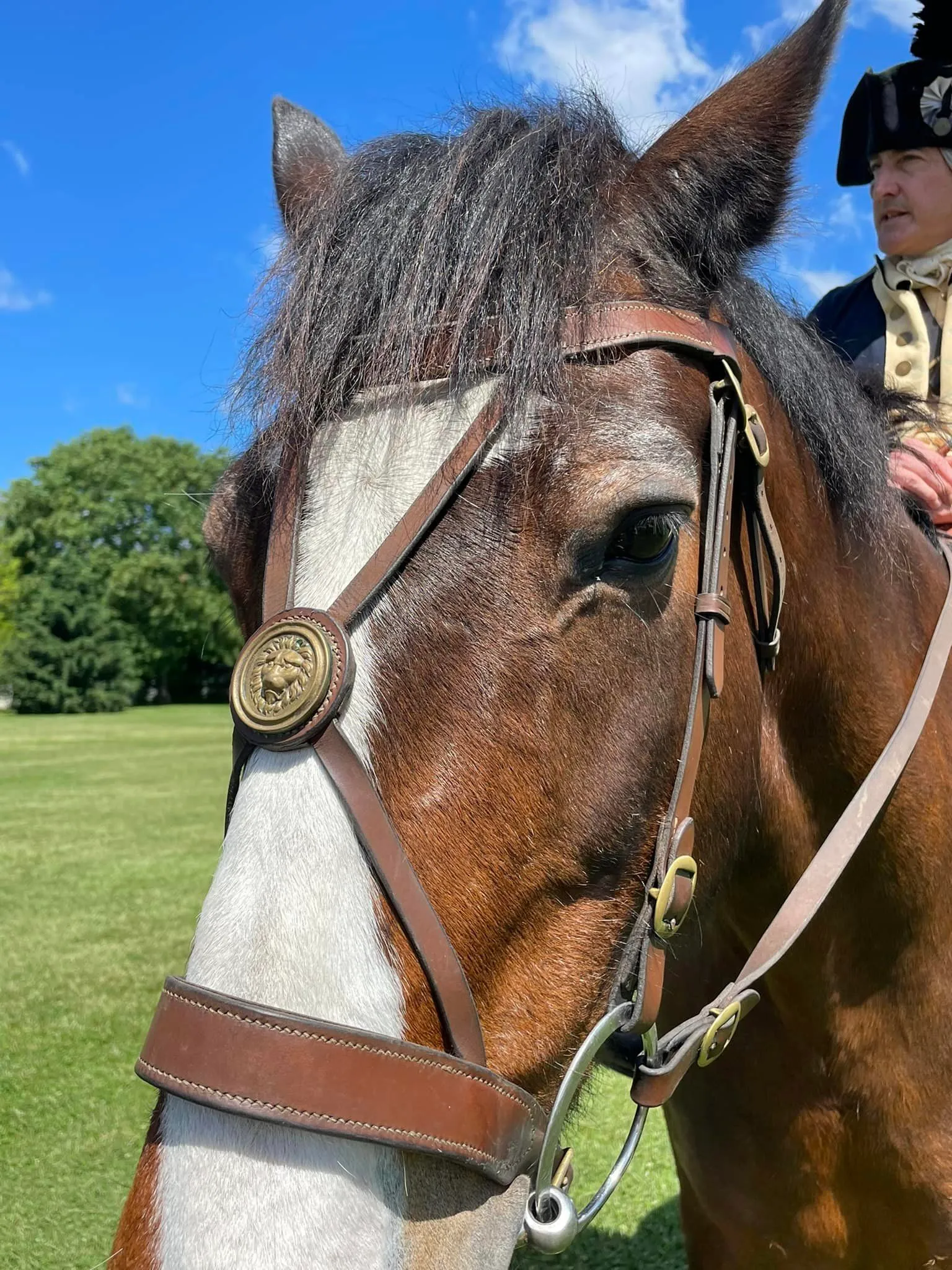How Do You Get the Right Frame on a Huge 1690’s Painting? Create It!
King William III's portrait has been added to the Colonial Williamsburg Collection.
Another one I should say! How do I know this? I check out the Events Calendar for Colonial Williamsburg almost every day. Correction: every day if I'm honest!
An event titled Museum Discoveries: Silvering a Frame has been on there for a bit and so I dropped in to check it out. I'm truly fascinated by the work our conservators (is that the right terminology?) do when it comes to the collection.
And this project is most definitely one that added to my respect for those who devote time and energy into preserving historical art.
Disclaimer: As a blogger, I use affiliate links sometimes! I may receive commission from purchases I share; it does not change your price but sometimes you might get a discount.
Let's start with some background on the King.
King William III, aka William of Orange, is not only the namesake of Williamsburg but was on the throne when the College of William and Mary was chartered in 1690. (Clearly named for him and his Queen, Mary).
In the 1690s, it was a thing to have huge portraits painted of royalty and noblemen. Clearly his impact on this region is as large as the approximate 5 foot by 9 foot portrait the silver frame is being created for!
In 1650, this British king was actually born at Binnenhof Palace in The Hague... in what was the Dutch Republic (now the Netherlands). He was no stranger to military theory as well as actually being in battle. If you want to know more about how he took the English throne as well as his "fights" with France, dive in!
Art conservation in Colonial Williamsburg.
I don't know the numbers, but I can say we have a pretty big team. As I mentioned in my wallpaper post, curating and restoring/conserving is not only important here but everywhere, and many museums count on our collection.
RELATED: If you want details on what an art conservationist does, this is a fantastic article!
When this huge portrait of King William III was acquired into the collection, the frame surrounding it wasn't authentic to the period. So what's to be done? Build one!
Fortunately, we have an original 1690's silver frame in the collection.
The frame in the Colonial Williamsburg collection is pretty well-worn and aged, as well as much too small to fit this painting, but is being used to inspire the structure and design.
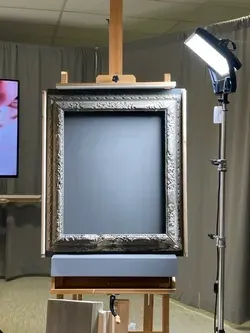
Above is the original silver frame in the art museum's collection.
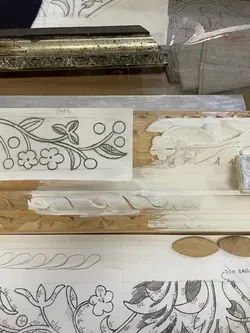
Several stages of creating the frame are involved. The sketching was taken directly from the design on the collection's frame, the design is carved into the wood, a "plastering" type of impression is made, there are materials such as chalk and glue as well as a "bole" (glue and clay) all used in the process.
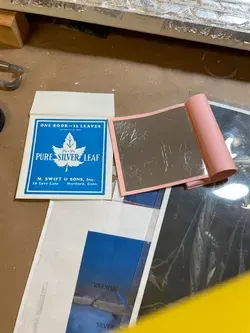
In the end silver-leaf is used in a precise, careful, and painstaking process. It's much thicker than gold-leaf but much finer than human hair.
I visited again today (updated 7/13/23) and learned more. How do they get the silver-leaf smooth so the edges don't show? By using a "burnishing" tool. The one for this project is made up of a polished agate stone. Yes, that was legit to the time period, however, I was told it was common to use teeth!
So I had to research this further. I found this reference online (used in gold leaf, but truly, it's the same process): click here.
These are the things I love to learn about.
The little bits (that are actually BIG) which make up our American history. Attending an event like "silvering a frame" can lead to discussions about art conservation, the creation and chartering of the College of William and Mary, how a king takes a throne, materials used in art and so much more. (And many of these things may be future post topics!)
The relationship and inter-connectedness of everything I'm discovering in the Historic Triangle is why I've been taking notes all along and decided a journal-style blog was something I needed to do!
If you do art conservation or have any thoughts, ideas, or history to share related to this post, please drop it in the comments! And if you want to learn more detail about this project, mention that as well or email me directly at [email protected].
Clearly, my focus is the 17th and 18th century colonies because of what I have surrounding me daily, but I'm interested to learn more and go beyond these boundaries of time and location.
Are you enjoying the blog? Use my online tip jar and buy me a coffee:
There is a huge practical disclaimer to the content on this blog, which is my way of sharing my excitement and basically journaling online.
1) I am not a historian nor an expert. I will let you know I’m relaying the information as I understand and interpret it. The employees of Colonial Williamsburg base their presentations, work, and responses on historical documents and mainly primary sources.
2) I will update for accuracy as history is constant learning. If you have a question about accuracy, please ask me! I will get the answer from the best source I can find.
3) Photo credit to me, Daphne Reznik, for all photos in this post, unless otherwise credited! All photos are personal photos taken in public access locations or with specific permission.
